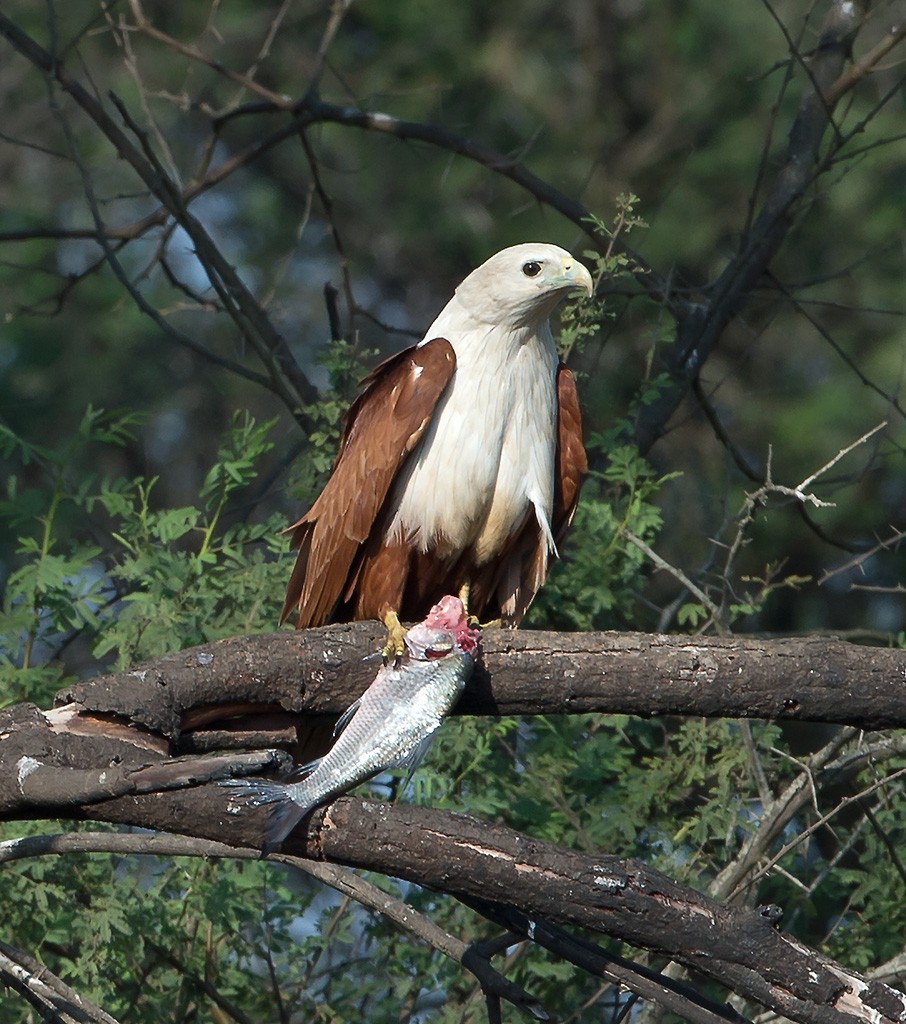Brahminy Kite
A species of Haliastur Kites Scientific name : Haliastur indus Genus : Haliastur Kites
Brahminy Kite, A species of Haliastur Kites
Botanical name: Haliastur indus
Genus: Haliastur Kites
Content
Description People often ask General Info
Description
The brahminy kite is distinctive and contrastingly coloured, with chestnut plumage except for the white head and breast and black wing tips. The juveniles are browner, but can be distinguished from both the resident and migratory races of black kites in Asia by the paler appearance, shorter wings, and rounded tail. The pale patch on the underwing carpal region is of a squarish shape and separated from Buteo buzzards. The brahminy kite is about the same size as the black kite (Milvus migrans) and has a typical kite flight, with wings angled, but its tail is rounded unlike the Milvus species, red kite, and black kite, which have forked tails. The two genera are, however, very close. The call is a mewing keeyew. 
Size
43-51 cm (17-20 in)
Nest Placement
Tree
Habitat
The brahminy Kite thrives in a variety of wetland habitats such as coasts, estuaries, rivers, lakes, and swamps. Its presence is also noted in marshes, reservoirs, and man-made environments like rice fields and urban areas. Tropically, it ranges across forests, agricultural lands, and grasslands, even when these terrains are located a distance from water sources. Characteristically, brahminy Kite nests in trees, with a preference for mangroves near water bodies, and occasionally on artificial structures.
Dite type
Scavenger
People often ask
General Info
Feeding Habits
Bird food type
Behavior
The breeding season in South Asia is from December to April. In southern and eastern Australia, it is August to October, and April to June in the north and west. The nests are constructed of small branches and sticks with a bowl inside and lined with leaves, and are located in various trees, often mangroves. They show considerable site fidelity nesting in the same area year after year. In some rare instances, they have been seen to nest on the ground under trees. A clutch of two dull-white or bluish-white oval eggs measuring 52 x 41 mm is laid. Both parents take part in nest building and feeding, but likely only the female incubates. The incubation period is about 26 to 27 days. It is primarily a scavenger, feeding mainly on dead fish and crabs, especially in wetlands and marshland, but occasionally hunts live prey such as hares and bats. They may also indulge in kleptoparasitism and attempt to steal prey from other birds. Brahminy kites have even been recorded taking advantage of Irrawaddy dolphins herding fish to the surface, in the Mekong River. A rare instance of a bird feeding on honey at the hive of Apis florea has been recorded. Young birds may indulge in play behaviour, dropping leaves and attempting to catch them in the air. When fishing over water, they may sometimes land in the water, but manage to swim and take off without much trouble. They roost communally on large and isolated trees and as many as 600 have been seen at one location. They may mob larger raptors such as the Aquila eagles. In some incidents where brahminy kites mobbed steppe eagles (Aquila rapax), they were attacked and injured or killed. A number of ectoparasitic bird lice in the genera Kurodaia, Colpocephalum, and Degeeriella have been reported. 
Distribution Area
This kite is a familiar sight in the skies of Sri Lanka, Nepal, India, Pakistan, Bangladesh, and southeast Asia and as far south as New South Wales, Australia, through which region it is widespread and resident. They perform seasonal movements associated with rainfall in some parts of their range. They are mainly seen in the plains, but can sometimes occur above 5000 feet in the Himalayas. It is evaluated as being of least concern on the IUCN Red List of Threatened Species. However, the species is on the decline in some parts such as Java. 
Species Status
Not globally threatened.
